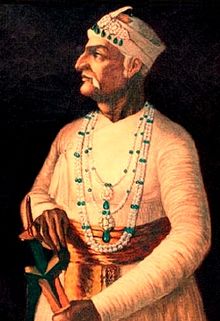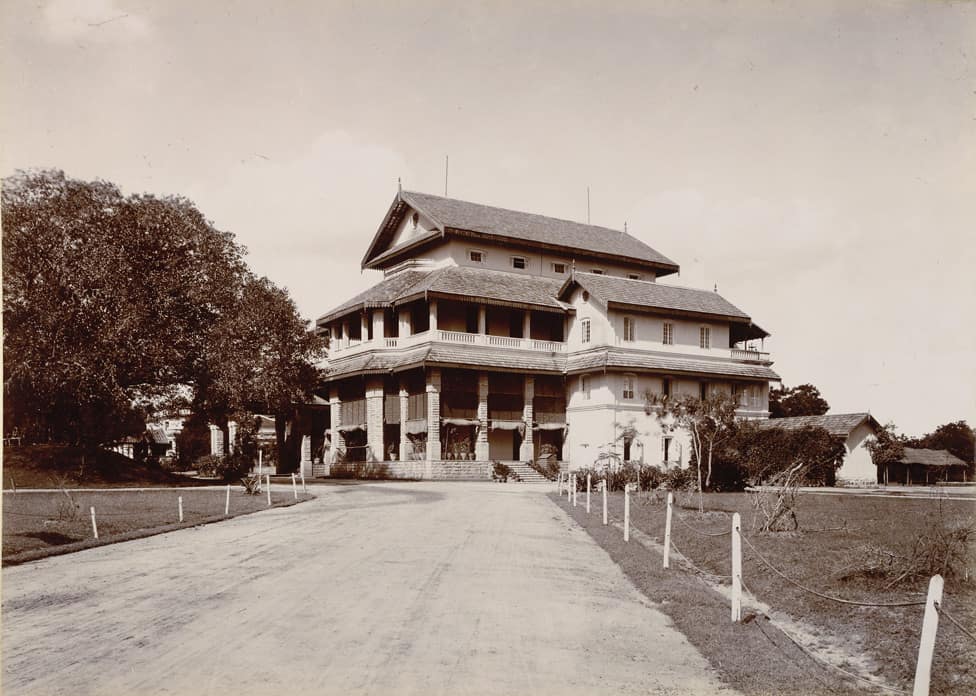
Any study of the historical process of identity formation in pre-modern India treads on a delicate path surrounding religious identities that recognise others as different, or not equal or socially distant from one another. This concept of alterity of religious communities in turn establishes specific identities and opens up newer definitions about syncretism, diversity, cultural differences and cultural sameness.
In trying to understand the influence of colonialism in Asaf Jahi Hyderabad, we need to keep in mind the genesis of Christian-Muslim relations in Europe which started to sour when Pope Urban II called the First Crusade in 1095. This traditional animosity which developed between the two groups helped shape the political events of the late medieval and early modern period.
Hyderabad was the largest Princely State in British India. As a result of colonisation of the Indian sub-continent, Oriental culture, as an idea presented the European identity as a superior one in comparison to non European peoples and cultures and harped on intellectual stagnation and cultural backwardness of Indians. In states like Hyderabad, as K.N.Panikkar says, it was the political and economic uncertainties and the sluggish cultural and intellectual activity especially in the nineteenth century that allowed scope for British intervention.

Owing to its subordination to the British after the Subsidiary Alliance treaty was signed in 1798 by the second Nizam, Mir Nizam Ali Khan Bahadur, at a time when British paramountcy was growing, Hyderabad witnessed a cultural transformation without losing its basic features. The British troops maintained to protect Hyderabad was significant in Britain’s late eighteenth century military calculations. This military deployment was absolutely central for the creation of the British imperial order that came to characterize colonial expansion and governance.
The contact of the two cultures, Muslim and colonial, naturally influenced each other in Hyderabad, in the administrative set-up, courtly life, in affairs of the nobility and masses. The consolidation of the extension of British authority over Hyderabad led to indirect control by the British in Hyderabad State’s official appointments, ceremonies, court practices, and educational and infrastructural development. Even as the two sides grew closer to each other, they wanted to retain their respective identities which also took the shape of cultural diversity which was born out of a deeper religious consciousness.
As time went by, the colonial powers and the Asaf Jahi Nizams sought to shape the existent traditions for their own cultural-political needs. With colonial influences taking root more firmly, architecture, clothing, court manners, cuisine and music underwent a visible cultural transformation in Hyderabad State. During the latter half of the eighteenth century, when the British envoys came to Hyderabad, they were accommodated and entertained in the large garden-house of Nawab Shamsheer Jung, situated close to the north-western bank of the River Musi. Later, when the Resident was permanently stationed at Hyderabad, the sixth among them, Captain Achilles Kirkpatrick, obtained permission for the construction of a permanent building.
A farman was issued in 1800 granting the British the land and garden-house of Shamsheer Jung for the purpose. The Residency was designed by Lieutenant S. Russel of the Madras Engineers and was built in six years from 1803-08. Its construction was supervised by Raja Mudaliar and Kirkpatrick. The design is very English, like a spacious English country house containing official suites as well as living quarters for the Resident. Kirkpatrick had also become popular in the social circles to the extent that he was given the title of Hashmat Jung by the second Nizam and fondly called Farzand-e-Dilpasand or the Favourite Son. He is even said to have fallen in love with a Muslim noble woman, Khairunnisa, and married her.
Another example is seen in the British having administrative control over certain areas in Hyderabad city such as Troop Bazaar and Koti, the area adjoining the Residency, as the British troops resided there. Yet another example is that of the third Nizam, Sikandar Jah, naming a large area north of the city as Secunderabad in 1806 which was essentially founded to station 5,000 troops of the British garrison. Secunderabad later became the largest British cantonment in India. To improve the internal administration and to ensure proper collection of revenue, Sikandar Jah placed European officers in charge of his revenue department which was later reorganised on efficient lines by Mir Turab Ali Khan Salar Jung I. Originally conceived as a military base for British troops, the cantonment soon began to house civilians who were associated with servicing the military, and developed into a full-fledged mini-city of its own.

In the fourth Nizam, Nasir ud Daula’s time, churches were constructed. Mir Tahniyat Khan Afzal-ud-Daula Asaf Jah V started the construction of the railways around 1860. Over a period of time, the British even brought in their civilian officers to look after the Nizam’s Railways, as well as the judicial system to administer the cantonment area. The Nizam also requisitioned British officers to help him set up the electrical, waterworks and various other reforms in the state. As a result, British presence in Hyderabad increased.
During the late nineteenth century, Secunderabad Public Rooms were opened to provide membership to British army men. The name was changed to Garrison Club and then to United Services Club as the army garrisons were stationed in Secunderabad. It shifted to its present location, the Secunderabad Club, when Mir Turab Ali Khan Salar Jung I who was the Prime Minister of the Hyderabad State offered his hunting lodge as a suitable building to house the club where the British Resident could come and spend his evenings. The Secunderabad Club was thus established by the British in 1878.
With the coming of the Europeans, Christianity had come to Hyderabad which led to the establishment of many churches for religious and missionary activities. The Nizams graciously permitted their construction. With this, European ecclesiastical architecture was introduced in Hyderabad. The St. Thomas Church of Roman Catholics, situated in the Residency Bazaars, was built in 1800 and is the oldest in Hyderabad. The Protestant St. George’s Church was built after the establishment of St. George’s Grammar School in 1834. The Nizam gifted the land for the church on the recommendation of the British Resident, Sir George Yule. St John’s Church, another beautiful church is situated at Secunderabad. A beautiful cathedral in Medak, the largest diocese in India, was completed by Rev.Charles W.Posnett in 1924. Believed to be one of the tallest and largest churches in the country, it is a fine example of Gothic architecture. The cathedral has three marvellous stained glass windows depicting the Divine Manifestation, the Crucifixion and the Ascension.

Residential buildings in Gothic style of architecture were also constructed in Hyderabad under colonial influence. Located in Secunderabad, the Le Palais Royal (Ibrahim Manzil) is a rare example of Gothic structure other than the churches. The classical European Clock Tower was constructed in 1860 by the British in Secunderabad. The beginning of the nineteenth century showed the European style in the construction of the beautiful Falaknuma Palace.
Typical British domestic architecture emerged in the Secunderabad cantonment. The main house type of the cantonment was the bungalow. Among different facets of colonial architecture, the bungalow stood out for its imposing single storied structure of imperial life replete with a pyramidal roof and stepped pillared verandah remaining a symbol of the British in India.

The sixth Nizam, Mir Mahboob Ali Khan’s penchant for well-tailored suits and the continental food spread during official banquets and private parties had become popular with the elite sections of society. In fact, a Europeanized lifestyle had even become a mark of status symbol distinguishing the influential from the ordinary and was adopted by many noble families in leading their regular lifestyle. These changes fitted into the existing system without disturbing the social harmony.
In the process of Christian-Muslim relations getting established in Hyderabad State, alterity became the basis for distinct identities to emerge and cultural identity underwent a transformation in the name of syncretism. In doing so, the state became a symbol of religious plurality and co-existence.
Salma Ahmed Farooqui is Professor at H.K.Sherwani Centre for Deccan Studies, Maulana Azad National Urdu University, Hyderabad. She is also India Office In-charge of Association for the Study of Persianate Societies (ASPS).

